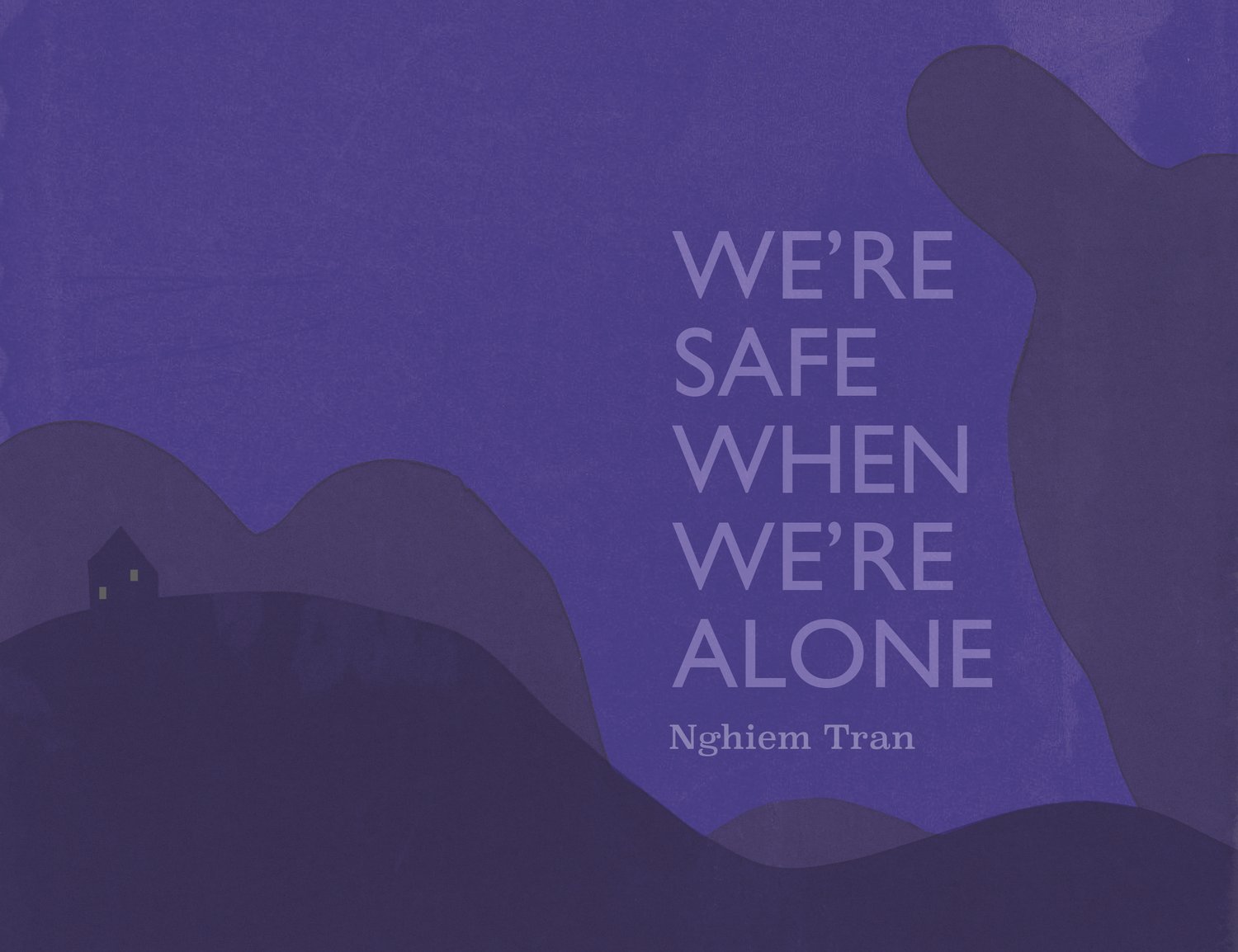Being scared just to be scared isn’t for me. I especially don’t enjoy jump scares or shock value. I mostly blame it on growing up in a fundamentalist church. In my imagination, the Devil and his demons sat right around the corner, looking for every opportunity to drag me to Hell. I definitely didn’t like preachers who talked about the End Times and the Antichrist. The concept of being left behind during the Rapture because of the tiniest possible sin proved psychologically debilitating at times.
While I’ve thankfully shed such harmful spiritual baggage, I still don’t like horror, even the campy stuff. That includes movies, music, television shows, and books. I prefer high-quality suspense – mostly for annoying writerly reasons. Give me a strong plot that creeps and builds. Introduce me to characters who keep me invested in the action. Show me what’s happening sharp prose that sets my mind a-whirring.
And that is exactly what We’re Safe When We’re Alone delivered.

In his debut novella, Nghiem Tran showers readers with a palpable sense of dread from the very first pages. Published by Coffee House Press, this pristine example of a literary slow burn fuses the horror stylings of Alvin Schwartz, R.L. Stine, Brian Evenson, and Carmen Maria Machado with delicious aplomb. Sure, the goal is to scare you, but it definitely won’t happen how you might imagine.
It’s the story of two characters, Son and Father, and it’s told exclusively through Son’s perspective. They live together in a creaky old mansion far outside the closest town. Father travels there to work every day, but he also implores Son to never leave. He teaches Son that the outside world is bad, and Son takes it to heart. Father only leaves because he has to earn money to pay for supplies.
One day, Father decides he doesn’t want to go to work, which both confuses and comforts Son.
However, after suffering a bout of depressive behavior, Father begins connecting with the neighbors. Son is disturbed by this change in Father’s behavior, as he had always been told that everyone outside their home only wished them harm. It doesn’t help that the neighbors are both super-friendly in personality but spectral in appearance.
What follows is a fantastical fever dream involving two different sorts of ghostly apparitions. They seem to be at extreme odds with each other, so Father and Son must often pick sides. When Father disappears one day, Son has to determine which spooky spirits can really help him and which ones definitely won’t. Certain specters put on a friendly face, while others keep their distance. Still others long to communicate with Son, but his deep-seated fear of the neighbors that Father cultivated prevents him from reaching our for help.
The impressive writing of Nghiem Tran completely holds your attention.

He sets the causes, effects, actions, and reactions swirling around Son. The events and characters grow murkier with each page you turn. The book delivers body horror, zombie elements, and nightmare vibes aplenty. The frenzied conclusion resembles the sort of action-packed rescue sequence you’d find in a movie.
Yet, the story’s power lies in its thematic ambiguity. Is it about socioeconomics? Class struggle? Cultural xenophobia? Generational trauma? I often found myself reading key passages over and over to make sure I hadn’t missed a key turn of phrase. I wanted to uncover the book’s secrets, but they remained in shadow, much like the neighbors.
Prepare to be weirded out – and then immediately prepare to read the book again.
Visit Coffee House Press to order.
Nghiem Tran artist photo by Mengwen Cao.


